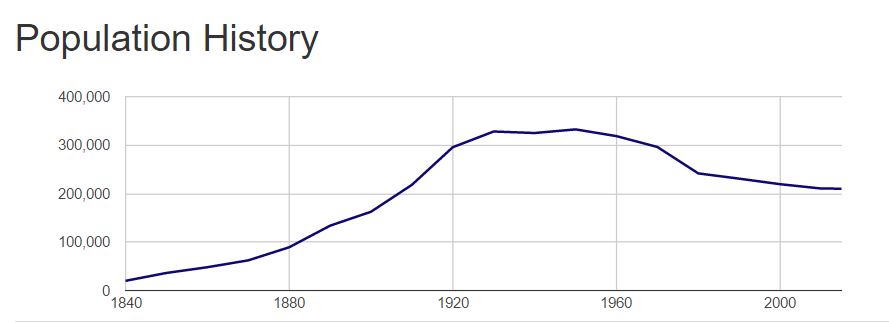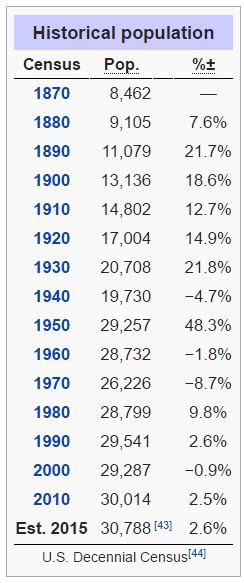A few years back, the city of Rochester, New York, won a federal TIGER grant from the U.S. Department of Transportation to remove a portion of the inner-loop freeway that had so constricted downtown. TIGER stands for Transportation Investment Generating Economic Recovery. It was a program created by President Obama during the recession of the aughts to encourage transportation investments outside the typical scope of the huge bureaucratic highway building monopoly of the DOT.
As I understand it, the President and his DOT secretaries see the TIGER program as a way to overhaul the top down, pork barrel planning and funding of transportation in order to make it more of a competitive bid process encouraging more holistic thinking outside of pure facilitation of driving.
The highway is now nearly gone, and the replacement boulevard nearly finished, and the city is already reaping the rewards. The New York Times ran an article last week detailing the market response to the undoing of bad 20th-century ideas: internalized shopping malls and inner-city highways.
These are two concepts about disconnection, exclusivity, and limited access, which is why they failed. If you want urban success, you want connectivity and abundant access. It’s also why Interstate Highway 345 in downtown Dallas is surrounded by blight, warehouses, parking lots, and vacant land.
The mid-sized city with a population of barely over 200,000 (less than Garland) now has half a billion in private investment pouring into downtown. Imagine half a billion pouring into downtown Garland. Or, scaling up to the population of the city of Dallas, that’s $3.25 billion.
Now, I don’t know Rochester and have never been there. I don’t speak for the people of Rochester, nor its leadership. However, I do know a transportation planner from the research triangle in North Carolina who responded to my retweeting of the NYT article with:
Not mentioned in the story- a thoughtful, strategic MPO in
@GTCMPO. Visited NC in 2014, doing good “fix it first” work
That’s good to hear that a regional transportation authority and its governing body are no longer subsidizing sprawl by investing in highways for hypothetical future people, which simply shapes the growth. It doesn’t create the growth. More often than not, it cannibalizes from the core. It seems Rochester came to this realization much like the rest of the mid-sized cities of New York state, which I do know pretty well.
I visit upstate New York at least once a year. The most startling thing about New York state is the negative impact that the placement of highways has had on its cities.
We all know the story of New York City, Robert Moses, and the little ol’ housewife Jane Jacobs who helped prevent two crosstown expressways from getting built through Manhattan. I calculated that this preserved at least $13 billion in private wealth, real estate value, and tax base that the Moses’ highways would’ve decimated (not to mention the auxiliary impact on the surroundings or the direct costs of acquiring the land and constructing the highways). This fight over inner-city highways preserved Manhattan as the center of town to go to rather than merely pass through.
The mid-sized cities, perhaps dreaming of something bigger, eagerly built highways through the center of their towns. Each have been suffering since. Hence, Albany, Syracuse, and Buffalo all have on-going campaigns in various stages to join in Rochester’s success and re-birth.
Besides the nature of the inner-city highways, these four towns have something else in common:




The populations of each peaked in the 1950s, when the highways began displacing people while also enticing people to cheaper land outside the city. We can solve the problem of the city by ignoring it, leaving it behind. Wiping our hands of it.
While I haven’t been to Rochester, I have been to the other three. Each is a sad husk of its former self. You don’t have to stray far from the highways to see the damage done. In fact, the damage follows the highways.
In contrast with the mid-sized cities are the lovely small towns dotting the Finger Lakes region (which is basically all of upstate NY). All were likely too small to attract attention from NYDOT when the interstate system was being built. Lucky.
Here are the populations by decade of two of these towns, Ithaca and Saratoga Springs:


Sure, highways can get you to these towns, but they don’t plow through them. Exactly as the original Eisenhower plan intended. Instead, the roads scale down to city streets in accordance with the scale and activity of the context.
Compare two recent visits to Ithaca and Syracuse, both home to major universities of about 21,000 undergrads, where I wanted to find a place to watch some on-going sporting event. Considering Syracuse is five times the size of Ithaca, you’d think finding a place on Sunday afternoon to watch the NFL would be easy. It was not.
On the other hand, in Ithaca, I was able to find a lively pub to watch a English Premier League match between Tottenham and Chelsea (boo). To underscore this point, I was last in Ithaca when school was out of session over the winter holidays but was in Syracuse while school was in. Again, Syracuse had everything in its favor. Except its urban form, divided and conquered by the state DOT. The result is a fragmented, disconnected place where the local economy suffers.
That gets at the heart of what it means to be truly ‘urban,’ which amplifies local economies when it is done right by bringing people, goods, ideas, capital, and markets closer together for more efficient exchange and accelerated synergies of growth, innovation, and progress. These small towns in New York are able to punch way above their weight by retaining their innate urban character and attraction.






